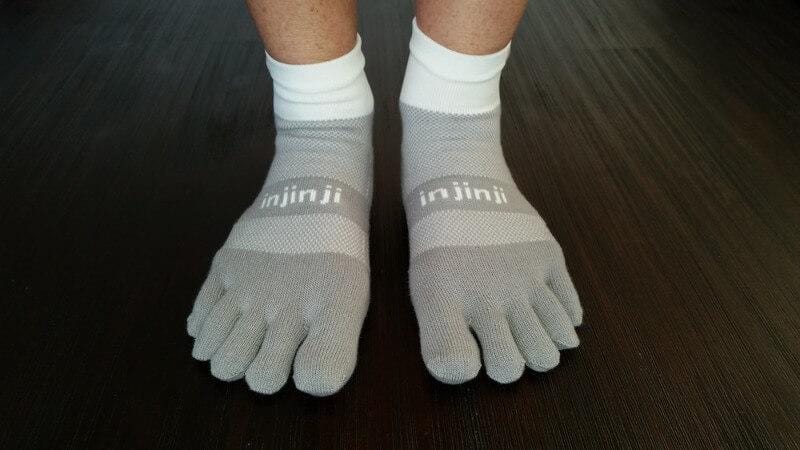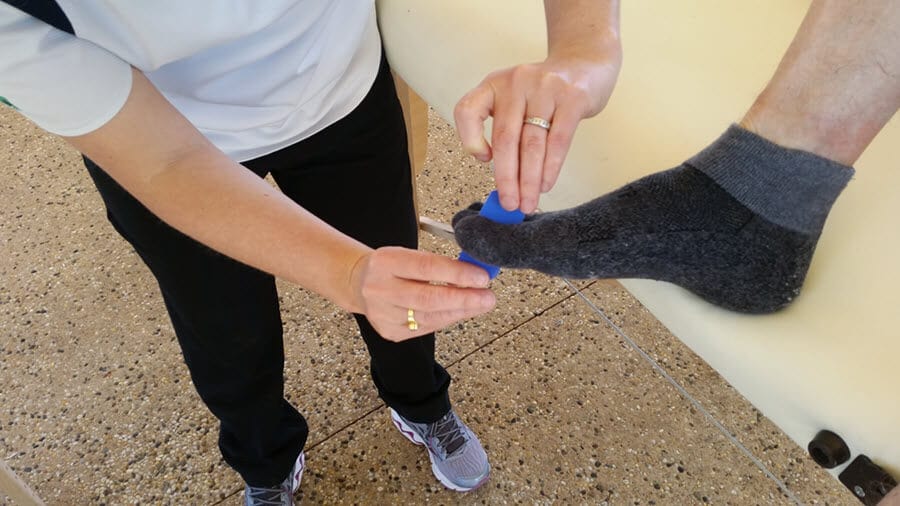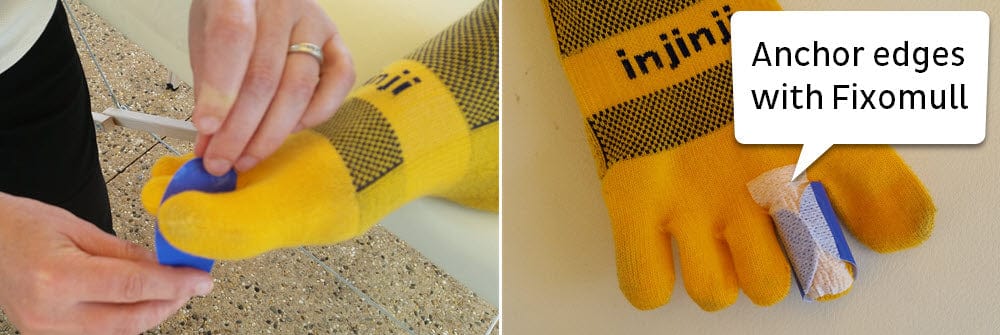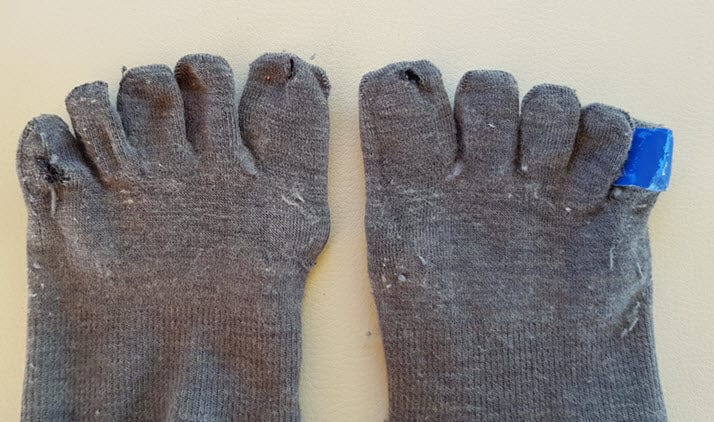Pinch blisters consistently rank in the top two most common blisters at multi day endurance events. And toesocks one of the most popular types of socks worn. While these socks help a lot in everyday situations, ultramarathon in-shoe conditions can quickly see the development of pinch blisters with toesocks.
Toesocks add two layers of sock within each interdigital space. These socks can be very effective at preventing interdigital blisters and pinch blisters, in shorter events. I certainly recommend them as one of the quickest and easiest prevention strategies for any interdigital blister. However, in multiday endurance events, foot swelling becomes a major factor. As foot volume increases, the finite space of the shoe’s toebox can quickly become completely occupied. The result is toes that are jam-packed and squished up tight against one another. Injinji toesocks
Injinji toesocks
Preventing Pinch Blisters With Toesocks
I’ve written at length about preventing this very common and debilitating blister. Taping, lubricants, gel toe sleeves, custom-made wedges, and toe-socks themselves; you can read all about their pros and cons at the above links. Oh, and footwear modifications too.
This article focuses on preventing (and treating) pinch blisters WITH toesocks WHEN space is tight, IN a multiday event WHEN stopping isn’t an option. This scenario presents a lot of difficulties which we encountered at the Adelaide 6 Day Ultramarathon. The lack of space in the toebox is the biggest difficulty.
Gel Toe Sleeves
Gel toe sleeves add bulk. Many times, we just didn’t have that room to spare. Not in the second half of the race, anyway. Plus, not many people can get a toesock over their gel toe sleeve. Not easily, anyway. It’s usually one or the other.
Wedges and Toeprops
Wedges and toeprops are also bulky. And custom-made wedges, made without toesocks in place, might not sit right when used in between the toesocks.
Taping
Taping is much less bulky than the above, but much less effective at absorbing blister-causing forces.
Lubricants
Lubricants are best used at a skin-skin interface (normal sock scenario) rather than a sock-sock interface (ie: toesock scenario).
That’s not to say the above combinations won’t work, I’m just saying things get a little more tricky, and the outcome a little less predictable.
What To Do Instead
Preventing & Relieving Pinch Blisters With Toesocks And An ENGO Patch

Using an Engo patch on the toe-sock to nip a pinch blister in the bud
With the widespread use of toesocks and the regular appearance of pinch blisters, I resorted to ENGO Patches on the sock at this event more than I ever have before. Mainly because nothing else works. And it proved to be a ripper, both in preventing pinch blisters, keeping them at their early stage and in treating them so they felt better and didn’t get terribly worse as the event progressed.
I cut the large oval patches into a thinner strip, applied it to the sock (while it was on the foot) and fastened the end with Fixomull Stretch (fixation tape).

Trim an Engo patch to size. This one is a large oval with the long sides trimmed so it's thinner. You could also use rectangle patches for this.
How Does an ENGO Patch Work With Toesocks?
It’s mainly about reducing friction levels.
This method will reduce friction levels in the interdigital space, if I was to guess, on a par with a greasy lubricant. That’s pretty slippery. But remember, we don’t have a skin-skin interface for the lubricant. What we have is a sock-sock interface and this is the perfect situation for an Engo patch to work. The two toes will be able to comfortably slip and slide relative to one another without the extreme blister-causing shear.
Another thing it does which is helpful is due to the patches not having any stretch in them. The patches bend plenty, but they don’t stretch. By having no ability to stretch, the patch acts as a buffer to the pinching forces of the adjacent toe. It kind of encapsulates the fleshy pulp of the toe, like tape does, but better.The upside
This combination minimises bulk added but maximises the resistance to getting pinched and squashed. An ENGO Patch is 0.38mm thick (0.015 inches) so they take up very little room in the toebox.

An Engo patch on toe-socks used to relieve a pinky toe pinch blister
The Downside
ENGO Blister Patches are used on a shoe or insole surface and are designed to stay there for weeks or months. But when used on a sock, you’ll only get the use out of it til you wash that sock. At this point it is likely to dislodge - immersion and agitation in soapy water (washing machine cycle) will do that with adhesive products.
When To Use
Rely on this strategy when you need it most, like an event, race, trek or day where you’re pretty sure you’re likely to be bothered with a pinch blister, and you can least afford to be dealing with the consequences. Remember, you’ll need a dry sock for them to apply to, so get it on at the start of the day rather than when you’re ¾ through and your sock is damp. Rest assured, once the patch is on, it will stay on spite of a lot of sweat and even external moisture sources (wet ground, rain, river crossings).
Moral of the Pinch Blister Story
An ENGO Patch can be worth its weight in gold when you want to wear toesocks and don’t want to be dealing with pinch blisters. Try the ENGO large ovals in the ENGO 4-Pack (below).








